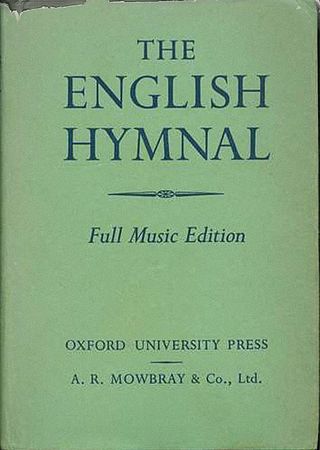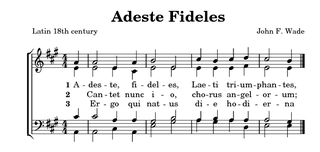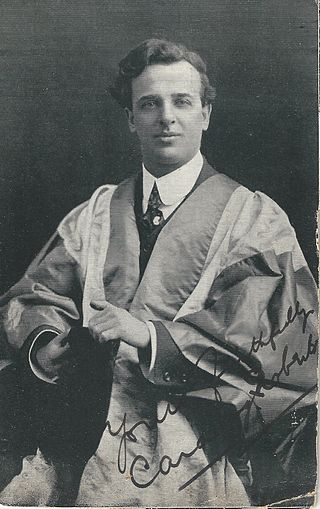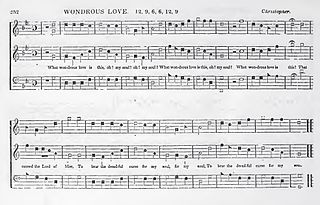
A hymn is a type of song, and partially synonymous with devotional song, specifically written for the purpose of adoration or prayer, and typically addressed to a deity or deities, or to a prominent figure or personification. The word hymn derives from Greek ὕμνος (hymnos), which means "a song of praise". A writer of hymns is known as a hymnist. The singing or composition of hymns is called hymnody. Collections of hymns are known as hymnals or hymn books. Hymns may or may not include instrumental accompaniment.

Saint Deiniol was traditionally the first Bishop of Bangor in the Kingdom of Gwynedd, Wales. The present Bangor Cathedral, dedicated to Deiniol, is said to be on the site where his monastery stood. He is venerated in Brittany as Saint Denoual. In English and Latin his name is sometimes rendered as Daniel.
Erik Reginald Routley was an English Congregational churchman, theologian and musician and arguably the most significant hymnologist of the 20th century. His nearly 40 books on theological thought and music of the Christian church are renowned. Raised in Brighton in a Congregational family, he spent his formative years at Lancing College in West Sussex. In 1936 he received an exhibition to Magdalen College, Oxford and afterward ministerial training at Mansfield College, Oxford. Ordained in 1943, Routley held pastorates in Wednesbury and Dartford before returning to Mansfield in 1948 as Chaplain, Lecturer, Librarian and Director of Music. In 1953, he was named to the Mackennal Chair of History. It was during these years that he became visible as an historian and hymn expert. He was also Chaplain of the Oxford Congregationalist Society and left a significant positive imprint on those he worked with. He joined the Hymn Society of Great Britain and Ireland in 1943 and became Editor of the Bulletin, their quarterly newsletter, for 27 years. He also wrote regularly for The British Weekly and the Congregational Monthly. His Oxford DPhil thesis (1951), The Church and Music: An enquiry into the history, the nature and scope of Christian judgement on music became the source for much of his writing for the rest of his life.

The English Hymnal is a hymn book which was published in 1906 for the Church of England by Oxford University Press. It was edited by the clergyman and writer Percy Dearmer and the composer and music historian Ralph Vaughan Williams, and was a significant publication in the history of Anglican church music.

Once in Royal David's City is a Christmas carol originally written as a poem by Cecil Frances Alexander. The carol was first published in 1848 in her hymnbook Hymns for Little Children. A year later, the English organist Henry Gauntlett discovered the poem and set it to music.
Cwm Rhondda is a popular hymn tune written by John Hughes (1873–1932) in 1907. The name is taken from the Welsh name for the Rhondda Valley.

"Nearer, My God, to Thee" is a 19th-century Christian hymn by Sarah Flower Adams, which retells the story of Jacob's dream. Genesis 28:11–12 can be translated as follows: "So he came to a certain place and stayed there all night because the sun had set. And he took one of the stones of that place and put it at his head, and he lay down in that place to sleep. Then he dreamed, and behold, a ladder was set up on the earth, and its top reached to heaven; and there the angels of God were ascending and descending on it..."
Yigdal is a Jewish hymn which in various rituals shares with Adon 'Olam the place of honor at the opening of the morning and the close of the evening service. It is based on the 13 principles of faith formulated by Maimonides. This was not the only metrical presentment of the Creeds, but it has outlived all others, whether in Hebrew or in the vernacular. A translation can be found in any bilingual siddur.

Hymns Ancient and Modern is a hymnal in common use within the Church of England, a result of the efforts of the Oxford Movement. The hymnal was first published in 1861. The organization publishing it has now been formed into a charitable trust, Hymns Ancient and Modern Ltd, and as of 2022 it publishes a wide range of hymnals as well as other theological and religious books and magazines, under imprints such as the Canterbury Press and SCM Press.

"Onward, Christian Soldiers" is a 19th-century English hymn. The words were written by Sabine Baring-Gould in 1865, and the music was composed by Arthur Sullivan in 1871. Sullivan named the tune "St Gertrude," after the wife of his friend Ernest Clay Ker Seymer, at whose country home he composed the tune. The Salvation Army adopted the hymn as its favoured processional. The piece became Sullivan's most popular hymn. The hymn's theme is taken from references in the New Testament to the Christian being a soldier for Christ, for example II Timothy 2:3 (KJV): "Thou therefore endure hardness, as a good soldier of Jesus Christ."
"How Great Thou Art" is a Christian hymn based on an original Swedish hymn entitled "O Store Gud" written in 1885 by Carl Boberg (1859–1940). The English version of the hymn and its title are a loose translation by the English missionary Stuart K. Hine from 1949. The hymn was popularised by George Beverly Shea and Cliff Barrows during Billy Graham's crusades. It was voted the British public's favourite hymn by BBC's Songs of Praise. "How Great Thou Art" was ranked second on a list of the favourite hymns of all time in a survey by Christianity Today magazine in 2001 and in a nationwide poll by Songs Of Praise in 2019.

A hymn tune is the melody of a musical composition to which a hymn text is sung. Musically speaking, a hymn is generally understood to have four-part harmony, a fast harmonic rhythm, with or without refrain or chorus.
Hymnology is the scholarly study of religious song, or the hymn, in its many aspects, with particular focus on choral and congregational song. It may be more or less clearly distinguished from hymnody, the creation and practice of such song. Hymnologists, such as Erik Routley, may study the history and origins of hymns and of traditions of sung worship, the biographies of the women and men who have written hymns that have passed into choral or congregational use, the interrelationships between text and tune, the historical processes, both folk and redactional, that have changed hymn texts and hymn tunes over time, and the sociopolitical, theological and aesthetic arguments concerning various styles of sung worship.

The Crucifixion: A Meditation on the Sacred Passion of the Holy Redeemer is an oratorio for a SATB choir and organ composed by John Stainer in 1887, with text by W J Sparrow Simpson. The piece relates the Biblical narrative of the Passion and Crucifixion of Jesus. It is particularly noted for the Christian hymn, All for Jesus, All for Jesus.
"Faith of our Fathers" is a Catholic hymn, written in 1849 by Frederick William Faber in memory of the Catholic Martyrs from the time of the establishment of the Church of England by Henry VIII and Elizabeth. Faber wrote two versions of the hymn: one with seven stanzas for Ireland, and another with four for England. The Irish version was sung at hurling matches until the 1960s.

Rachie, frequently sung to the hymn I Bob Un Sydd Ffyddlon, is a Welsh hymn tune. The music was composed by Caradog Roberts, with lyrics by Henry Lloyd, who is better known by his bardic name Ap Hefin. The lyrics are a call to battle, as can be seen with the English translation.
The God of Abraham Praise is a Christian adaptation of the well known Jewish hymn "Yigdal", loosely translated and Christianised by the evangelist Thomas Olivers after a visit to the Great Synagogue of London in 1770. It was first published in 1772. The title of the hymn was based on a verse in the Book of Exodus: "I am the God of thy Father, the God of Abraham".

"What Wondrous Love Is This" is a Christian folk hymn from the American South. Its text was first published in 1811, during the Second Great Awakening, and its melody derived from a popular English ballad. Today it is a widely known hymn included in hymnals of many Christian denominations.
"Praise to the Living God" is an American Judeo-Christian hymn written in 1884 by Max Landsberg and Newton Mann. It was revised in 1910 by William C. Gannett.

Jesu, meines Glaubens Zier is a German Lutheran hymn by Gottfried Wilhelm Sacer, first published in 1661. Its hymn tune, Zahn No. 6453, was first published in 1714, in Freylinghausen's hymnal. In 1736 the hymn was adopted in Schemellis Gesangbuch, with a figured bass accompaniment which may have been contributed by Johann Sebastian Bach (BWV 472).












